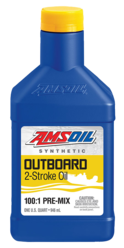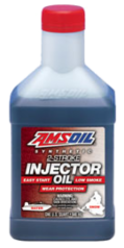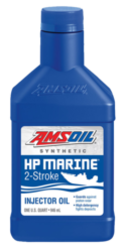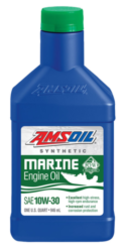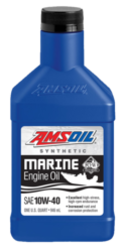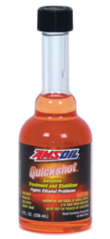INDEPENDENT DEALER
Sanford, NC | (800) 781-8840 ext 1
AMSOIL lubricants are engineered to protect your watercraft in all conditions
So you can remain carefree and on the water longer.
. 
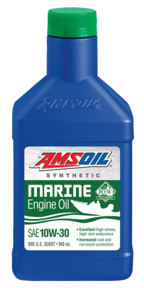
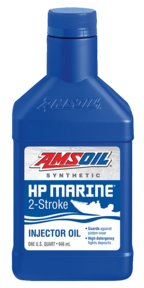



Revamped AMSOIL Marine Product Line Keeps You On The Water
Most anglers work full-time and have precious little time for fishing. To maximize their time on the water, they need lubricants that protect their motors from wear despite challenging operating conditions.
Much like automotive engines, marine motors are becoming more advanced and tougher on oil. Four-stroke motors are becoming lighter and produce more low-end torque than before. They’ve largely closed the performance gap on two-stroke motors. In fact, sales of four-stroke motors are on the rise, while two-stroke sales have declined.
Demanding Operating Conditions
Marine motors are characterized by high-rpm operation that can shear the molecular structure of oil and reduce its ability to protect against wear. On average, a marine motor propelling a boat 30 mph operates at 5,000 rpm, while an automotive engine at 60 mph operates around 2,000 rpm. The added heat and stress invite wear and deposits. Heavy deposits can cause piston rings to stick. Stuck rings lead to compression loss, which reduces power. Stuck rings can also lead to catastrophic piston scuffing.
The marine operating environment creates additional challenges for oil. Marine motors are constantly exposed to humid air. The moisture the motor ingests increases the likelihood of corrosion compared to automotive engines. Water-cooled marine motors also run at lower temperatures than air-cooled engines, so moisture in the oil doesn’t evaporate as readily. Plus, when the motor is shut down for the day, moist air continues to enter the engine as it cools, increasing the risk for corrosion, especially if the oil doesn’t contain anti-corrosion inhibitors.
A bad day of fishing beats a good day at work, but subpar engine performance or malfunction can ruin any day on the lake. AMSOIL synthetic marine lubricants are formulated to keep two- and four-stroke engines operating reliably at peak efficiency so your time on the water remains stress-free.
AMSOIL Marine Products
Designed for pre-mix applications as lean as 100:1 ratios or richer. Improves throttle response and lowers or eliminates smoke. Minimizes deposit formation and lowers emissions.
AMSOIL Synthetic 2-Stroke Injector Oil reduces wear and maximizes engine life. Its high lubricity and reliable film strength help protect against piston scuffing and bearing wear.
Excellent for Evinrude® E-TEC™ factory-lean setting (replaces Evinrude XD100™ 2-Cycle Oil). Helps prevent deposits, protects against wear, has low smoke, protects against rust and has low aquatic toxicity.
Resists water washout and degradation. Unparalleled protection for boat trailer wheel bearings and other components frequently exposed to water.
For use in 4-stroke gasoline fueled engines in marine applications. Offers unsurpassed wear protection, viscosity stability, low volatility and excellent rust protection.
Reduces the oxidation process that occurs when fuel is stored for extended periods to prevent the formation of varnish and sludge which can clog injectors, stick floats and cause poor engine performance.
For use in 4-stroke gasoline fueled engines in marine applications. Offers unsurpassed wear protection, viscosity stability, low volatility and excellent rust protection.
Premium fuel additive formulated to thoroughly clean and restore peak performance in small engine and powersports equipment fuel systems.
AMSOIL Warranty
 AMSOIL guarantees the performance of its products, so you can be confident they perform as advertised. AMSOIL introduced the world’s first API-qualified synthetic motor oil and has since introduced a full line of industry firsts. For more than 40 years, AMSOIL synthetic lubricants have proven themselves in the lab, on the racetrack and on the highway.
AMSOIL guarantees the performance of its products, so you can be confident they perform as advertised. AMSOIL introduced the world’s first API-qualified synthetic motor oil and has since introduced a full line of industry firsts. For more than 40 years, AMSOIL synthetic lubricants have proven themselves in the lab, on the racetrack and on the highway.Testimonials
2-Stroke Oil Keeps 1974 Evinrude Running
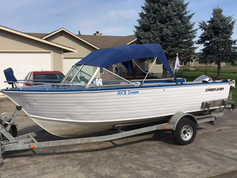 So many variables determine the life expectancy of an outboard motor that it’s hard to predict with any accuracy how long an outboard motor will run.But almost anyone would agree that a 1974 Evinrude that is still performing well in 2017 is unusual. If you’re the guy who got it for free, you’re thrilled.Dealer Mark Neibuhr of Sequim, Wash. has a 1974 Evinrude Silver Starflite 135 hp outboard that he still uses. “I acquired this boat around ‘93 or ‘94, (totally stripped and gutted) and was given the outboard, which needed rebuilding,” Neibuhr said.
So many variables determine the life expectancy of an outboard motor that it’s hard to predict with any accuracy how long an outboard motor will run.But almost anyone would agree that a 1974 Evinrude that is still performing well in 2017 is unusual. If you’re the guy who got it for free, you’re thrilled.Dealer Mark Neibuhr of Sequim, Wash. has a 1974 Evinrude Silver Starflite 135 hp outboard that he still uses. “I acquired this boat around ‘93 or ‘94, (totally stripped and gutted) and was given the outboard, which needed rebuilding,” Neibuhr said. 